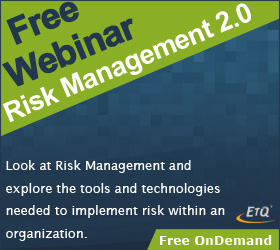All improvement efforts require a framework. No matter what we are doing, we all need some way to align our efforts and focus on a specific objective. During my 40 years in this business, I have seen many different models offered as frameworks for improvement. Most of these have been variations on two basic forms. First, back in the 1980s, there were various versions of plan, do, study, act (PDSA). More recently, we have had define, measure, analyze, improve, control (DMAIC) models. This column will reveal the three fundamental questions that form the basis for all of these models. Answer these three questions, and you will have a road map for success. The many different improvement models simply dress up these three questions with different details.
The ideal
The first question is: What do you want to accomplish? Until you have a clearly stated objective, you risk everyone running off in different directions, working on their own pet projects, and not cooperating for the common good.
…

Comments
Three Questions for Success
Hello Mr. Wheeler:
Thank you again for sharing your wisdom. Your three questions remind me of what I learned from Deming's body of knowledge. What is the organization's aim? By what method with the aim be attained? How will you know?
Thank you!
Sincerely,
Dirk van Putten
A workable operational definition
Somewhere between 1993 and 1996, I remember being taught about operational definitions during my Quality Engineer degree classes from the University of Miami by Dr. Howard Gitlow. He worked with Dr. Deming for a while. He said that, according to Deming, an operational definition had three parts. An operational definition consists of:
1) A criterion to be applied to an object or to a group;
2) A test of the object or group; and
3) A decision method as to whether the object or group did or did not meet the criterion.
Above all, the operational definition was such that all concerned parties could agree on it. Gitlow used the Deming example of 50% wool and 50% rayon. I have never been able to find this kind of definition in the TQM or SPC books, anywhere. I used to look at new quality books to see if they defined it this way. Your article is the first that I have seen the three parts of the definition in print. No matter what, in practice, this definition seems to work quite well for me. Thank you Dr. Gitlow.
Thank you, Dr. Wheeler, for your columns.
Claire Jones
Huntsville, AL
Sci Method and Op Definition
Howdy. You cannot find this in Quality books. The original came from Operational Philosophy, stemming from Hayakawa, A J Ayer, K Popper, and others long before 1969. It is the basis for Sci Method, where the roots date back to Aristotle (Phil of Science) for the first form (Essentially, structured repeated sensations (experiments) leads to experiences and knowledge). A good book is "Operational Philosophy", A. Rapoport, International Soc. for General Semanitcs, 1969 under "Is X True?" where the "operational definition" format is described as a formal approach to an operational definition of "truth", as opposed to the other definitions of 'truth' that were defined at the time. The format is given by:
--> Each assertion implies predictions to be tested by conceivable operations (Ideal and Methodology -- or perhaps "Goal/Objective, Decision criteria, Plan")
--> The tests are carried out (methodology/Execute the plan)
--> The predictions are verified. (Judgment, 'conclusions, results including paths to new 'truths')
This leads to 5 results: If all 3 steps are performed: The assertion is "true/false or true to a probability". If we conceive of the tests, but never act, (step one only) then the assertion is "indeterminate" [Eg. "Pluto is made of cheese" I can conceive of tests -- space ship, etc. -- but I haven't made the trip yet]. If there are no conceivable or realistic tests, then the assertion is "meaningless" [Eg. "Love is green ether"]. You should be able to see the root of the scientific method here.
There are many renditions of the scientific method, and you can see that this is one view and it contains all the items we normally consider as part of the sci method. "Quality" did not invent the Operational Definition -- the roots are in the phil. of science -- hence, why you cannot find the references in quality books. It has been around for centuries in a variety of similar approaches.
Add new comment